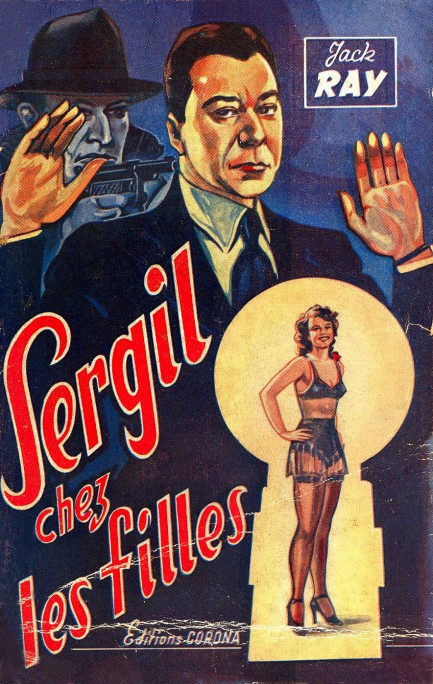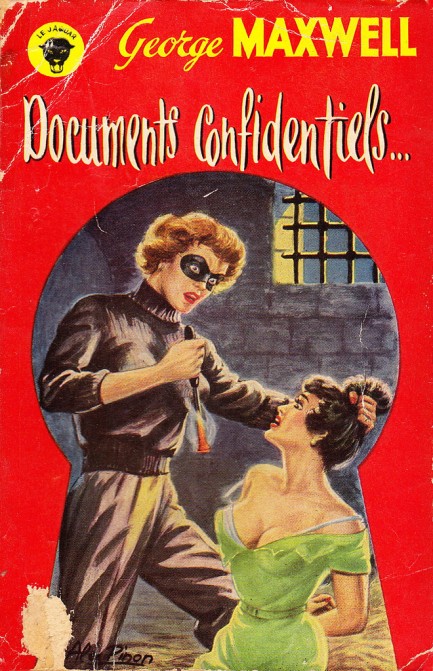 Return to sender, address unknown. 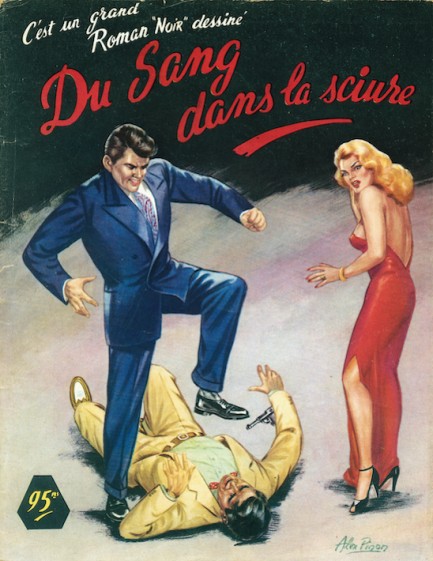
Once again a French imprint comes up with a violent cover. On the front of Guy Mouminoux's 1953 graphic novel Du sang dans la sciure—“blood in the sawdust”—a fight is going poorly for one guy who looks headed to a cosmetic surgeon or a mortician. We don't make that statement randomly. This very thing happened to a friend of ours and cosmetic surgery was the result. We have an entire collection of fighting paperback covers, and if you're interested you can see it here.
 You know why I'm great at my job? Because I'm sweating like a racehorse in this get-up and you can't tell. 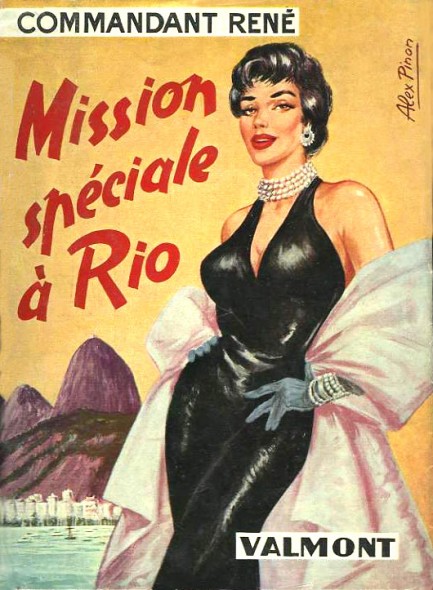
French artist Alex Pinon knocks this cover for the spy thriller Mission spéciale à Rio out of the park with his black clad femme fatale and backdrop of Guanabara Bay and its famed Sugarloaf Mountain. Since Rio's average daily temperature never drops below 80 Fahrenheit, no Brazilian would actually dress like this, at least not during daytime, but the art is great. The book was published by Société des Éditions Nouvelles Valmont and its author called himself Commandant René. You're probably assuming that's a pseudonym, and you're right. It was used by Jacques Dubessy, Guy de Wargny, Henri Certigny, and other authors. Between them they wrote more than thirty books as this Commandant person, with the above coming in 1959. We have a lot of French art in the website, so poke around if it interests you. We'll have more soon.
 Hiding behind her won't help you. She's my wife, and this morning she demanded a divorce. 
Here's another cover to add to our collection of women being used as human shields, Faut pas me la faire by Robert Chirze, aka Georges Claveyre-Peyre, for Éditions le Trotteur's collection Les Grandes Roman Noirs, 1953. The art is a particularly nice example of the work of Alex Pinon, and you can see another piece here.
 Shake ya popotin, but watch yourself. 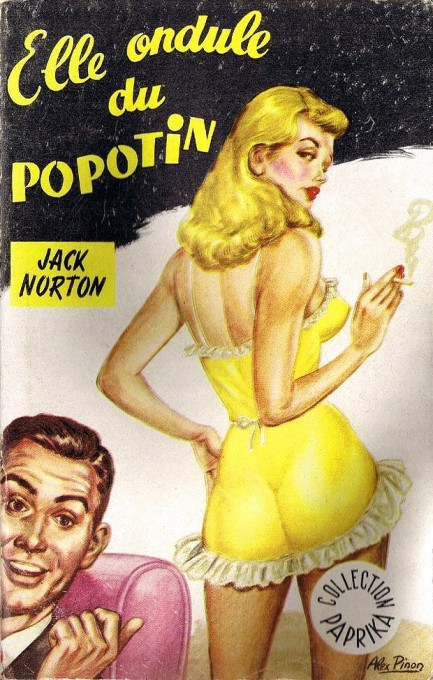
Above, a cover for Elle ondule du popotin, written by Jack Norton for Éditions Le Trotteur’s Collection Paprika and published in 1953. Norton was of course a pseudonym, in this case for Jean de Backer, who also wrote as Jacques Norton, Henry Ghils, and others. The title of this translates rather provocatively as “she sways her ass,” which is exactly what the artist seems to have been trying to depict with this femme fatale in sheer lingerie. That artist was Alex Pinon, a favorite of ours. We haven’t really begun to share his work the way we’d like, but we will, and in the meantime, if you click over to our keyholes collection from last July, you can see a few more Pinons there. By the way, “popotin”? That’s one of the funnier words for butt we’ve heard. Not great as a song lyric, but maybe we can work it into conversation sometime.
|
 |

The headlines that mattered yesteryear.
2003—Hope Dies
Film legend Bob Hope dies of pneumonia two months after celebrating his 100th birthday. 1945—Churchill Given the Sack
In spite of admiring Winston Churchill as a great wartime leader, Britons elect
Clement Attlee the nation's new prime minister in a sweeping victory for the Labour Party over the Conservatives. 1952—Evita Peron Dies
Eva Duarte de Peron, aka Evita, wife of the president of the Argentine Republic, dies from cancer at age 33. Evita had brought the working classes into a position of political power never witnessed before, but was hated by the nation's powerful military class. She is lain to rest in Milan, Italy in a secret grave under a nun's name, but is eventually returned to Argentina for reburial beside her husband in 1974. 1943—Mussolini Calls It Quits
Italian dictator Benito Mussolini steps down as head of the armed forces and the government. It soon becomes clear that Il Duce did not relinquish power voluntarily, but was forced to resign after former Fascist colleagues turned against him. He is later installed by Germany as leader of the Italian Social Republic in the north of the country, but is killed by partisans in 1945.
|

|
|

It's easy. We have an uploader that makes it a snap. Use it to submit your art, text, header, and subhead. Your post can be funny, serious, or anything in between, as long as it's vintage pulp. You'll get a byline and experience the fleeting pride of free authorship. We'll edit your post for typos, but the rest is up to you. Click here to give us your best shot.

|
|












